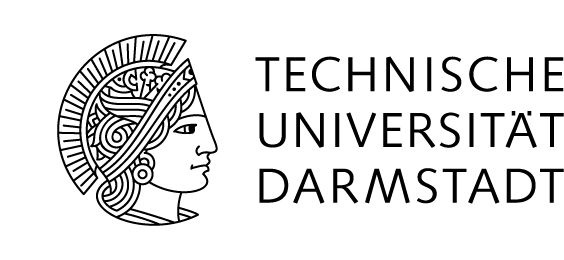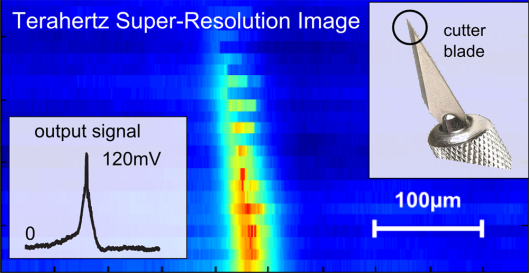NearSense – A silicon-based terahertz near-field imaging array for ex-vivo life-science applications
Phase 1 and 2
The NearSense project has the challenging objective to propose a fully integrated all-electronic silicon based sensor for medical and biological applications, which is low-cost, handheld, small, and additionally able to work at room-temperature. NearSense requires major innovations in an inter-disciplinary research field and is therefore conducted by an interdisciplinary team who will jointly identify the relevant bio imaging parameters for marker-free intraoperative tumor margin identification in tissue sample tests and blind tests.
Participating Institutes and Institutions:
Universität Wuppertal, Institute for High-Frequency and Communication Technology (IHCT)
Universität Bordeaux
Institut Bergonié – Centre régional de lutte contre le cancer
Research Team:
Prof. Dr. Ullrich Pfeiffer, head of IHCT at BUW,
Prof. Dr. Thomas Zimmer, head of Nanoelectronics research group at UB,
Dr. Gaetan Macgrogan, Bio-Pathology Department Coordinator at IB,
Dr. Laven Mavarani, post-doc at IHCT,
Dr. Janusz Grzyb, microwave engineer, group leader at IHCT
Dr. Patrick Mounaix, researcher in the THz field,
Dr. Jean-Paul Guillet, associate professor,
Dr. Christine Tunon de Lara Christine; surgeon
M. Sc. Philip Hillger, PhD student at IHCT
M. Sc. Amel Al-Ibadi, PhD student at UB
M. Sc. Hugo Balacey, PhD student at UB
Objectives
Based on the current state-of-the art medical results suggest that the interaction of THz waves with biological tissue has great potential for future life-science applications. However, the available terahertz instrumentation is fundamentally limited by its physical size, its diffraction-limited optical resolution, and its large image acquisition time due to scanning. This hampers the development of novel life-science applications in medicine, biology, and pharmacology. The aim of NearSense is to overcome this limitation. The NearSense overall objective is to develop a sub-wavelength imager for ex-vivo life-science applications including an array of fully-integrated THz near-field sensor pixel. NearSense makes use of advanced silicon process technologies and it provides the required technological breakthrough to enable marker-free intraoperative tumor margin identification with terahertz waves for the first time. Thereby, the challenges are to develop a tiny sensor with the appropriate sensitivity and a well-defined sensing area. The major issue in the proposed configuration is that source, sensor and detector are located in the same chip plane. Since the entire circuitry is located under the chip top surface, where the sample-sensor interaction happens, unintended interactions with the sample have to be prevented.
The major NearSense objectives are to identify the relevant bio imaging parameters for marker-free intraoperative tumor margin identification in tissue sample tests and blind tests. The tumor identification is based on the spectroscopic measurement of the complex dielectric permittivity. The bio parameters provide the specification for a sub-wavelength THz imager, like best frequency and bandwidth, resolution and signal-to-noise-ratio (SNR). The proposed imager architecture is a highly integrated self-consistent on-chip sensor pixel that allows both, near-field sub-wavelength resolution imaging and spectroscopic analysis of the sample under test for higher confidence level in cell recognition. Combining both features in a single sensor is extremely challenging and has never been reported before. Another objective of the project is the development of a complete self-consistent sensing pixel with on-chip THz power source that will directly illuminate the corresponding sensor from the chip level. Using an integrated THz power source avoids the use of contemporary bulky external THz source components and instead helps to collimate everything onto the tiny sensor area. The sensing pixel should additionally allow simultaneous imaging at multiple frequencies to capture possible cell dispersion. This will require the development of complex multi-frequency switchable or tuneable THz source, THz receiver, and electromagnetic near-field sensor components. Lastly, the projects objective is to develop a large array with real-time imaging capability of the sensing pixels on a single chip. In a possible phase-II extension of NearSense, this array will be further developed into a sub-wavelength imager including the parallel readout of the array with video-rate imaging capabilities for ex vivo life-science applications.
Abstract
The project’s main objective is to leverage silicon-based economies-of-scale for a technology breakthrough in life-science. The aim is to develop a silicon-based THz sub-wavelength imager for tumor margin identification and the results of this interdisciplinary research proposal will help a surgeon to make an instantaneous (intraoperative) decision during an oncological surgery – substantially improving the quality-of-life of a patient. The challenging objective of NearSense requires major innovations in an inter-disciplinary research field. The NearSense research is, therefore, conducted by an interdisciplinary team of physicists, oncologic surgeons, histopathologists and engineers. The scientific breakthrough is provided by a fully-integrated THz near-field sensor pixel comprising of a THz source (transmitter), an electromagnetic near-field sensor element (transducer), a THz detector (receiver) including the readout thereof. The THz near-field sensor pixel will provide the spectroscopic properties (complex dielectric permittivity) of bio cells on the micrometer scale. Its bio imaging parameters (imager specification) are identified in the project’s first phase for tumor margin identification in tissue sample testing. The projects second phase leverages silicon-technologies to integrate large arrays with real-time acquisition capability to provide a surgeon with high resolution THz video analysis during an oncological surgery. NearSense exploits the benefits of the terahertz radiation with the required sub-wavelength optical resolution for intraoperative bio imaging.
Keywords: Histology, tumor margin identification, intraoperative, terahertz waves, sub-wavelength resolution, ex-vivo medical imaging, near-field sensor array, silicon technology
Publications
Journal publications:
Grzyb, J., Heinemann, B., & Pfeiffer, U. R. (2017). Solid-State Terahertz Superresolution Imaging Device in 130-nm SiGe BiCMOS Technology. IEEE Transactions on Microwave Theory and Techniques. DOI: 10.1109/TMTT.2017.2684120 (April, 2017)
Conference contributions:
9th THz Days, 12.-15.06.2017, Dunkerque, France: oral presentation and abstract
A silicon-based terahertz near-field imaging sensor for ex vivo life-science applications (L. Mavarani, P. Hillger, J. Grzyb, Q. Cassar, A. Al-Ibadi, T. Zimmer, G. MacGrogan, J.P. Guillet, P. Mounaix, U.R. Pfeiffer)
THz Spectroscopy and Imaging for Breast Cancer Detection in the 300-500 GHz range (Q. Cassar, A. Al-Ibadi, T. Zimmer, G. MacGrogan, L. Mavarani , J. Grzyb, U. Pfeiffer, J.P. Guillet, P. Mounaix)
42nd International Conference on Infrared, Millimeter and Terahertz Waves (IRMMW), 27.08.-01.09.2017, Cancún, México: conference paper and oral presentation
A Novel Approach of Aqueous Solution Analysis Using a Fully-Integrated Terahertz Near-Field Sensor (L. Mavarani, P. Hillger, J. Grzyb, Q. Cassar, A. Al-Ibadi, T. Zimmer, G. MacGrogan, J.P. Guillet, P. Mounaix, U.R. Pfeiffer), accepted
THz Spectroscopy and Imaging for Breast Cancer Detection in the 300-500 GHz range (A. Al-Ibadi, Q. Cassar, T. Zimmer, G. MacGrogan, L. Mavarani , P. Hillger, J. Grzyb, U. Pfeiffer, J.P. Guillet, P. Mounaix), accepted
8th International THz-BIO Workshop, 4.-6.10.2017, Frascati, Italy: conference paper
THz Spectroscopy and Imaging for Breast Cancer Detection in the 300 – 600 GHz Range (Q. Cassar, A. Al-Ibadi, T. Zimmer, G. MacGrogan, L. Mavarani, P. Hillger, J. Grzyb, U.R. Pfeiffer, J.P. Guillet, P. Mounaix), submitted


